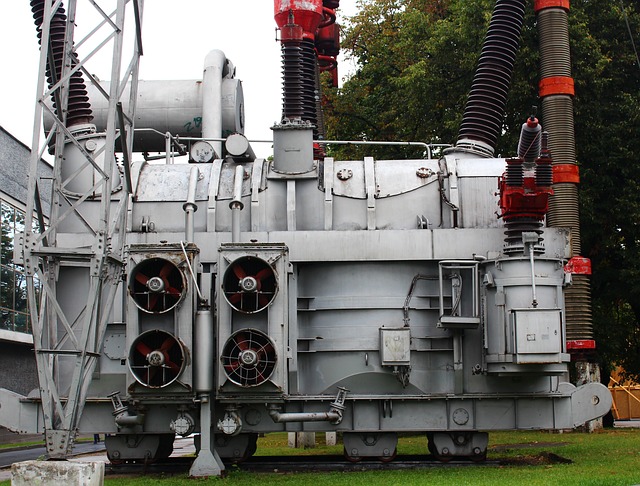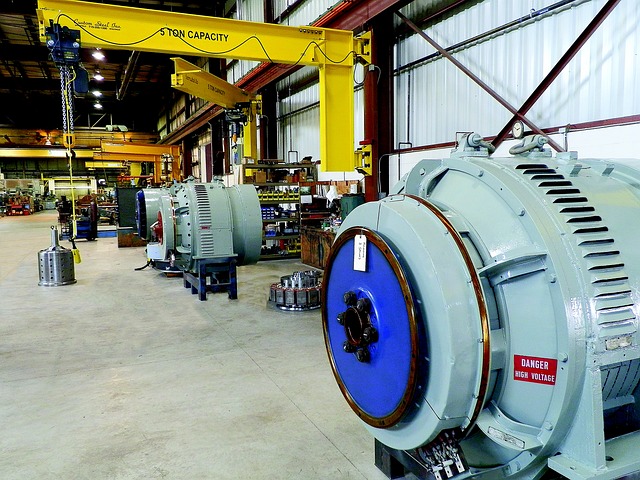The development of renewable energy resources is one of the major keys to answering the global energy challenge, along with reducing environmental degradation associated with conventional methods of power generation. Wind and hydropower resources are among some of the feasible resources presently available because of their availability and renewability. Permanent magnet generators are one of the keys to very critical improvement in performance and efficiency in wind turbines and hydropower systems. With so many advantages to the application of permanent magnet generators, they become very helpful in driving the transition toward renewable energy sources in wind and hydropower applications. These generators make great contributions to the development of renewable energy infrastructures by making more effective and reliable use of energy from wind and hydro resources. These would add greater potency to the contribution toward a greener and greener sustainable future with continuous growth in developments and integrations.

Principle of permanent magnet generator
A permanent magnet generator is based on the principle of electromagnetic induction, which mainly converts mechanical energy into electrical. The principle discovered by Michael Faraday back in the 19th century showed that a change in a magnetic field around the conductor induces an electric current within it. The permanent magnet generator consists of high-performance permanent magnets made from materials such as neodymium-iron-boron or samarium-cobalt. These magnets provide a steady magnetic field that does not vary over time. Voltage is produced at the conductor ends as the conductor moves in a magnetic field.
In wind power, the kinetic energy from the wind turns the blades of a wind turbine, which in turn causes the rotor to spin. The rotor is attached to a shaft that is attached to a permanent magnet generator. As the rotor rotates, so do the magnets inside the generator, creating a rotating magnetic field. This rotating magnetic field induces alternating current in the stator windings of the generator.
In hydroelectric power generation, flowing water drives the turbine to rotate. The rotation of the turbine is transmitted to a permanent magnet generator, which rotates the magnets and produces a rotating magnetic field that then induces a current in the stator windings.
AC power from these permanent magnet generators is usually first converted to a higher voltage using power electronics before it is fed into the grid or stored in the form of a battery backup. Operating on permanent magnets, with no extra amount of input energy fed for field production, the overall efficiency is normally higher than any conventional type of generator.
Permanent magnet generators are designed to efficiently and directly convert mechanical energy into electrical energy. The permanent magnet provides a stable magnetic field that allows for steady, reliable power output, which again makes the generator usable in modern wind and hydroelectric power systems. This principle enables the PMSGs to play an important role in the development of renewable energy infrastructure and to present one of the sustainable and environmentally friendly solutions for meeting the increasing energy demand of the world.
Advantages of Permanent Magnet Generators
Permanent magnet generators have a lot of advantages in wind and hydroelectric power generation, hence being the ideal application to maximize energy capture by improving system efficiency and, therefore, reducing operating costs. Through the benefits of permanent magnet generators for wind and hydroelectric power generation, the potential of renewable energy projects in maximizing power generation can contribute to better system performance in the interest of a more sustainable future.
High efficiency: Permanent Magnet Generators have the maximum capacity for conversion, with the least waste of renewable energy; they would, in that case, turn a generation into an electrical form from either kinetic, wind, or hydrological, flowing water. Thus, the conversion into electrical potential is highly efficient and affords a way of increasing the overall energy production with the advantage of high efficiency.
Small size and lightweight: a permanent magnet generator has a compact and light design and can be installed with much ease at any place. This will reduce the costs by using smaller sizes that will lower transportation and installation costs, hence improving viability.
Higher reliability: Permanent magnet generators are more reliable and require less maintenance as compared to conventional generators. With fewer moving parts, the mechanical friction and chances of failure are at a minimum; hence, it increases the system’s reliability and uptime.
Improved turbine performance: Permanent magnet generators give good performance given changing wind speed conditions for generating power from the wind. They have a good efficiency adaptation in the case of changing wind conditions while optimum power is extracted from the wind resource for maximum yield of power. Equally, in hydroelectric power generation, these generators excel at low-head applications by adapting to different flow speeds and extracting maximum power from the water resource.
Efficiency at part load: Permanent magnet generators remain very efficient in their usage at part load; thus, they find high applicability in renewable plants due to the fluctuation in energy. Whether in wind turbines-with their differing wind speeds-or a hydroelectric plant with their usual and customary fluctuation of water currents, they can guarantee a broad range of operational generation efficiently.
Reduced environmental impact: The permanents reduce the environmental impacts related to the generation of energy from wind and hydroelectric power. The fact that permanent magnet generators provide higher efficiency helps in developing renewable sources in a far better way with less exploitation of infrastructure, thereby also decreasing environmental disturbance associated with a large number of installations.
Cost-effectiveness: Generally, permanent magnet generators are costlier than conventional ones, but they could allow economies in the long run. Since permanent magnet generators have higher efficiency, they would contribute to a higher power with a low leveled cost of power generation in a renewable energy plant. Further, the reliability and reduced maintenance needs of permanent magnet generators contribute to lowered operating costs over the useful life of the system.
Permanent Magnet Generators vs. Traditional Alternators
Speaking of generation, there are two main varieties of generators in application: permanent magnet generators and traditional alternators. While they offer the same service, they differ significantly in certain areas of their operation, making some of them stand out above the others in terms of performance, reliability, and efficiency. The following constitutes a further comparison between a permanent magnet generator and a conventional alternator. Once these differences are understood, then one will understand why permanent magnet generators are a better option.
Permanent magnet generators use permanent magnet rotors and not wound rotors like in conventional alternators. The magnet provides a magnetic field that interacts with the stator windings to induce an electric current. Because there are no windings, the design of the generator is much simpler. Since there is no winding, permanent magnet generators have higher efficiency compared to the conventional alternator. With a stronger magnetic field provided by the magnet, energy conversion efficiency is higher. In other words, there would be less energy loss and higher output power at lower operating costs.
The permanent magnet generators are more reliable as compared to the traditional alternator because they have a lesser number of moving parts. In a conventional alternator rotor, there are many wires, which may break or wear out. Since the permanent magnet generator magnet rotor doesn’t contain wires, there is a drastic reduction in the risk of failure.

Permanent magnet generators are by nature lighter and smaller, and this is because there is no requirement for windings. The same reason may make them more fit when weight is crucially constraining mobile applications. Equally, renewable energy systems play a significant role in most circumstances where space constraints have tended to be a common bottleneck.
Permanent magnet generators are still a little more expensive when compared to conventional alternators due to high-quality magnets. However, in the long run, PMSGs offset a higher initial price through more efficiency, higher reliability, and lower maintenance costs. Since the design is less complicated, permanent magnet generators are less maintenance-intensive: without windings, there is less abrasion, and system life is longer, reducing costs in maintenance.
Permanent magnet generators perform much better than conventional alternators at low speeds and, therefore, are ideal for renewable energy systems like wind turbines. Permanent magnet generators can even generate electricity at low wind speeds, which is not possible with conventional alternators.
Permanent magnet generators might cost a little higher in the initial stages, but considering efficiency, reliability, and less maintenance, this would be a better investment over a longer period compared with traditional alternators. Their simple design is light in weight and compact in size, with excellent low-speed performance. Hence, they are very highly applicable for renewable energy purposes.
Otherwise, you can take our recommendations about permanent magnet generators in selecting generators for both wind and hydropower. It will be important for your production.
